Our 4D Seismic Technology:
A Case Study in Eugene Island Block 330

4D adds value to 3D seismic by IDENTIFYING changes in attributes over
time
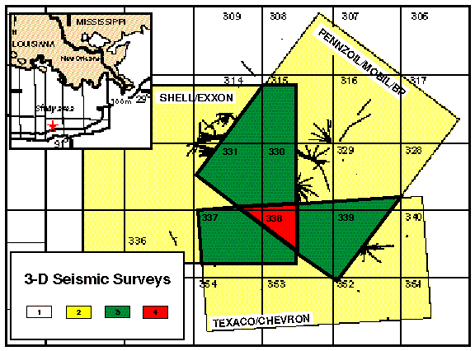
The
4D seismic monitoring methodology merges the computational simulation of
expected changes in acoustic reflectivity from drainage with the observed
snapshots of the real reservoirs. We demonstrate its utility in the eugene
island 330 field of offshore Louisiana.
4
generations of 3D seismic surveys have been acquired over the eugene island
330 field, first in 1985, then in 1988, 1992 and again in 1994. These datasets
contain seismic snapshots of the field as it has been drained of more than 100
million barrels of oil equivalents.
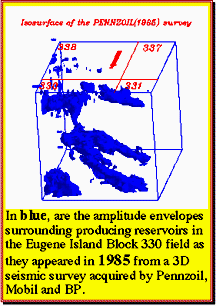
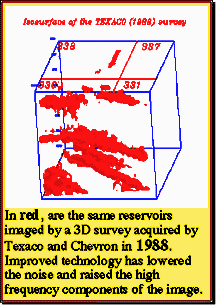
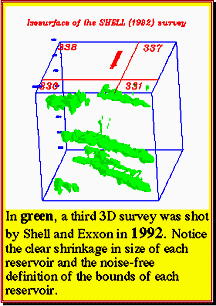
Click on the above panel to see these animated!
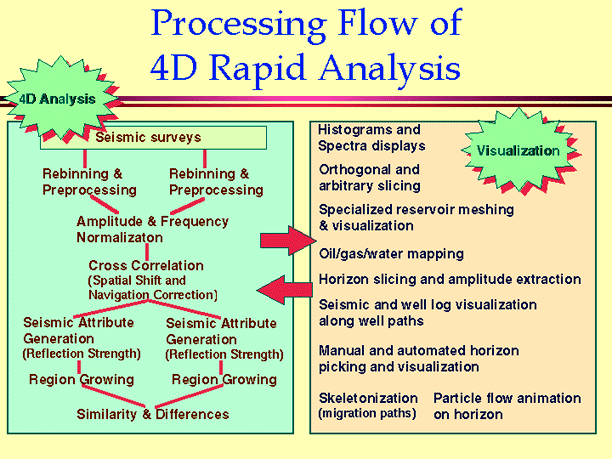
Here is a schematic of the steps taken in our 4D Rapid Analysis methodology.
The following sections will illustrate many of these steps.
Seismic Response to Oil/Gas/Water Changes
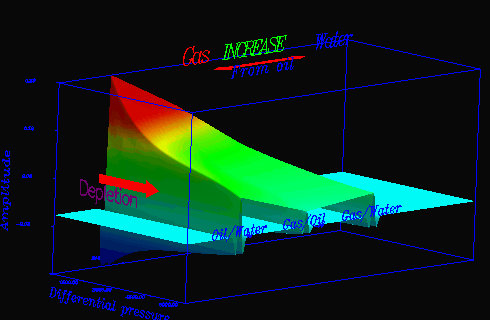
Click on the above panel to see it animated!
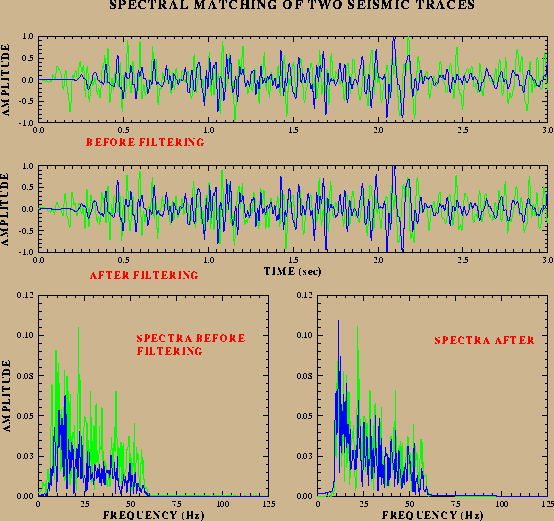
Green -- 1985 Pennzoil
Blue -- 1992 Shell
Amplitude Matching
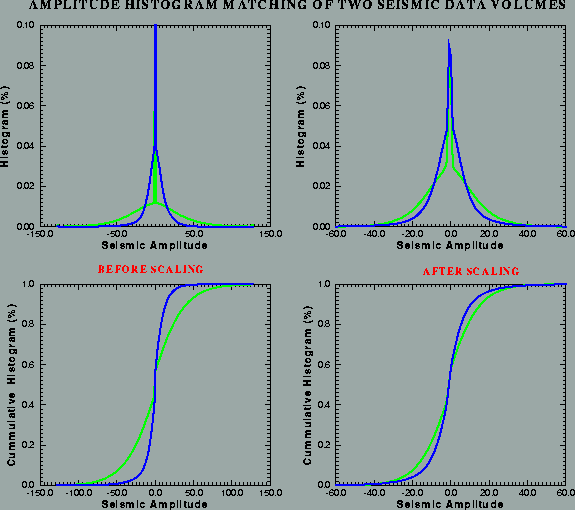
Green -- 1985 Pennzoil
Blue -- 1992 Shell
4d Seismic Differencing Technique.
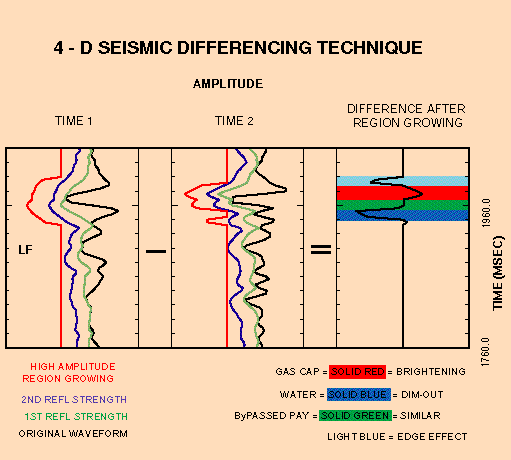
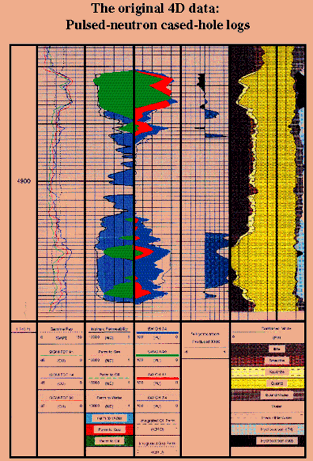
Regions are then grown around highest amplitude seed-points by tracking in
3D the variations in gradient of the amplitude change away from the central
seed points. High amplitude regions do not contain constant amplitudes at
their outer surfaces as isosurfaces do. All voxels outside high amplitude
regions are then zeroed-out to downsize the data volumes for differencing.
Little LF Slice-thru and Texaco A-8ST Well
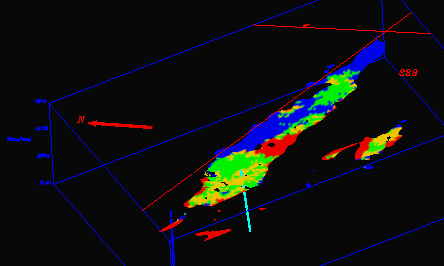
Click on this panel to see it animated!
In
the L sand, seismic differences predict a gas cap has formed updip in the
reservoir, and water has encroached from downdip, but the fact that much of the
central portion of the reservoir is green indicates that considerable bypassed
pay is located there. A horizontal well was drilled into this bypassed pay in
1994, and the well has produced about 1000 barrels per day since--and from a
reservoir which had been produced for more than 20 years.
Drilling to Verify Bypassed Pay
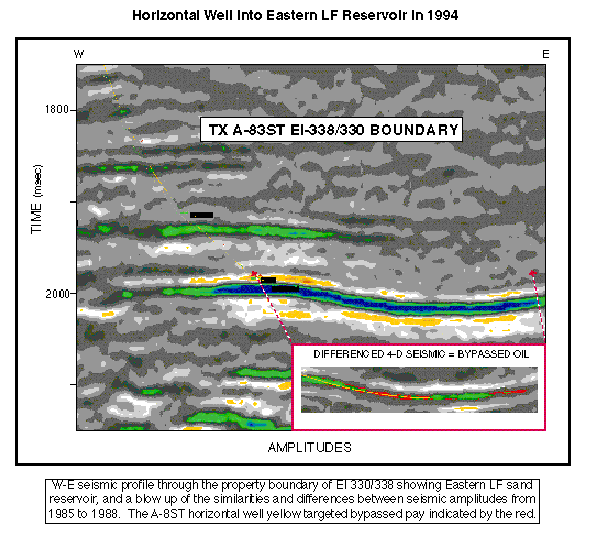
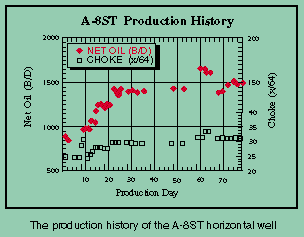
In order to test if 4D predictions of bypassed pay were accurate, Pennzoil
and EI 330 partners joined Texaco and Chevron owners of EI 338 to conduct a
detailed reservoir characterization analysis of the LF reservoir. They then
planned and executed a highly successful horizontal well into the bypassed pay
interval indicated by our 4D analysis. In the spring of 1994, a 1200'
horizontal sidetrack was drilled, the A-8ST. Production exceeded 1500 bbl/day
in August, 1994, and the well was still flowing over 1000 bbl/day in October,
1995 with cumulative production exceeding 400,000 bbl in a small reservoir with
older production dating back to 1974.









